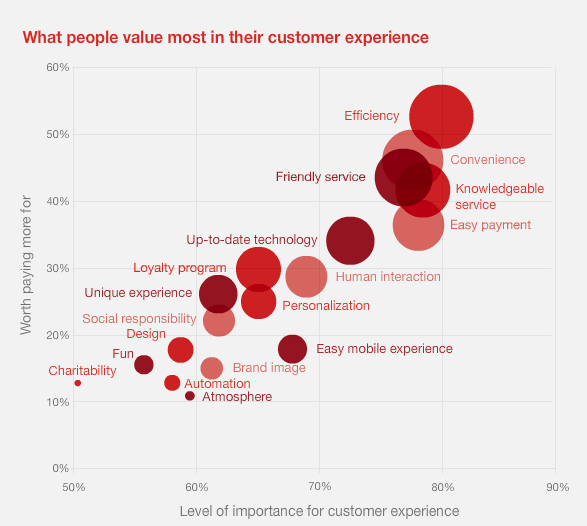Advertising disclosure: We are a participant in the Amazon Services LLC Associates Program, an affiliate advertising program designed to provide a means for us to earn fees by linking to Amazon.com and affiliated sites.
The classic definition of employee empowerment never seemed right.
Most customer service leaders I talk to think of it as giving employees a certain degree of autonomy. Here's a quick story that illustrates the challenge with this definition:
A technical support rep, let's call him Scott, was empowered to take as long as necessary to help a customer solve an issue. One particular challenge routinely took Scott about 30 minutes to fix, which was much longer than the five minute average for a typical call.
Scott was empowered in the classical sense—he had the authority to spend an unusually long time on the phone to help his customer.
Where the definition falls short is one of Scott's colleagues, let's call her Janet, figured out how to solve the same issue in just five minutes. This was great news for Janet’s customers, but not so great for Scott’s. It meant Scott wasn’t truly empowered to fix the issue quickly because he didn’t know how.
Here’s a better definition of empowerment and how it can help you improve service quality and employee engagement.
What is employee empowerment?
When researching customer-focused companies for The Service Culture Handbook, I discovered that authority is just one aspect of empowerment. A fully empowered employee is able to do their job well. Here's the full definition in a customer service context:
Employee Empowerment is a process of enabling employees to deliver outstanding service to their customers.
Customer-centric companies combine three elements to empower, or enable their employees:
Resources
Procedures
Authority
Resources refer to the materials, tools, and equipment necessary to serve customers. For Scott, the technical support rep, this meant creating a knowledge base where he could quickly access solutions to common challenges.
Procedures refer to the best-known way to get things done. It's incredibly inefficient for Scott to take 30 minutes to solve a problem that Janet knows how to solve in 5; Scott would be more empowered if he knew about Janet's solution.
Authority is still that classic definition of autonomy. There are times when the standard procedure just doesn't make sense, and employees need a bit of leeway to do what's right. So Scott could still spend 30 minutes on the phone with a customer, if that was necessary for a new or tricky issue.
Why is employee empowerment important?
Empowering employees benefits customers, employees, and managers. Customers are happy because they get faster, higher quality service. Employees are happy because they feel they can truly make a difference with the people they serve. Managers are also happy because they spend less time doing tasks that empowered employees can do themselves.
Here's a simple example from a movie theater:
A mom with a young child placed an order at the snack bar. The mom handed a hot dog to her child, who promptly dropped the hot dog on the floor. It was a frustrating moment for the mom, but the movie theater employee quickly remedied the situation by giving the mom a new hot dog. He did it instantly without asking his manager for permission.
Think about the impact this small gesture made:
The mom was relieved to avoid a potentially frustrating and embarrassing situation.
The employee was able to quickly fix the problem.
The manager didn’t need to stop whatever she was doing to intervene.
There was also another benefit. Other customers who witnessed the incident saw how helpful the employee was. This primed customers to think of their own experience more positively.
What are the risks to empowering employees?
Empowering employees must be done carefully, because there are definitely some risks involved. The most common examples cited by customer service leaders include:
Service will be inconsistent if each employee does things their own way.
Employees might cost the company money by giving away too much.
Customers might take advantage of overly generous empowerment policies.
The real cost of these risks is typically overblown.
Several years ago, a cable company called Bright House Networks instituted a new empowerment policy. (The company has since been acquired by Charter Communications.)
Employees were allowed to issue account credits up to $1,000 without getting a manager’s approval. There were specific guidelines put in place to help employees make good decisions, but the decision was their’s to make. Bright House Network did put in one safeguard: any credit issued for more than $250 was audited to ensure employees were making smart choices.
In the first six months after the policy was implemented, management found zero inappropriate credits. In other words, employees were using good judgment!
How do you empower employees?
The starting point to empower your own employees is to look for areas where they are not able to make customers happy, even if they are doing their jobs correctly:
Start by identifying your top customer complaints.
Identify any complaint an employee is unable to resolve.
Investigate what resources, procedures, or authority is required.
You can find more detailed instructions for empowering your employees in this post.












